Different types of exam questions make for a rich test structure, which applies to a wide range of students. Learn about common test questions, their characteristics, advantages, and disadvantages in this article.
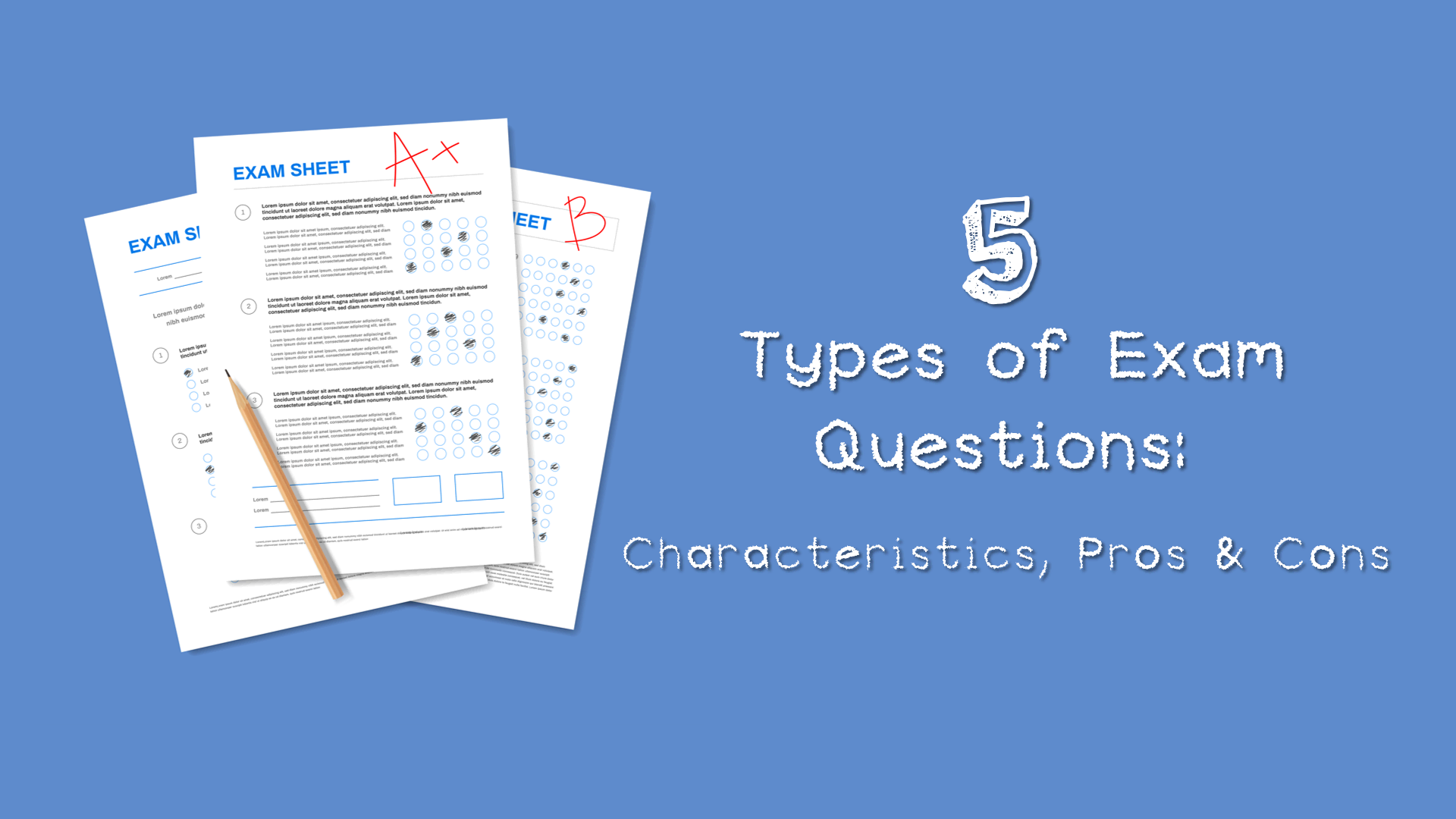
In the previous article, we learned 7 tips for creating online exams. One of the tips is about choosing the types of exam questions. It is also true for paper-based exams. The questions decide whether a test is good or bad. Thus, writing effective test questions plays an important role to assess students of all levels. Generally, there are two categories of test items: Objective and Subjective.
Objective items ask students to choose the correct answer from several given options. The question can also be a short word/phrase that answers a question or completes a statement. So far, this type of question is very common on both paper and online exams. Objective items include: Multiple Choice, True/False, Completion, and Matching.
Subjective or essay items need students to come up with an idea and present a problem. Students need to recall and organize their knowledge in a logical sequence, integrating answers.
Both of these categories can be effectively designed using either the traditional pen-and-paper approach or online methods. An eLearning authoring tool that creates questions for online exams like ActivePresenter may give you a helping hand. It can generate all the questions mentioned above. Moreover, it provides many other utilities such as random slides, or a countdown timer. They give the test extra security. You can also refer to some eLearning games built on the question types in the app.

Those types of exam questions have their own characteristics, advantages, and disadvantages. To assess students objectively and fairly, teachers should choose the appropriate question type for each kind of test. For more information on that, don’t skip this article. It will give you more information about the 5 most frequently asked questions on the test, which are:
5 Types of Exam Questions: Characteristics, Pros & Cons
Now, let’s get to know the 5 types of exam questions frequently asked in classes.
1. Multiple Choice
Multiple choice questions are the most popular type of question in an exam. It has been used for decades in all fields. A question consists of a stem. It can be either a question or a partial statement. Sometimes it’s also about finding the best answer. The stem often has 3-5 possible answers (choices). One of them is correct and the rest are alternatives or distractions. As you may know, there are many rules when creating multiple choice questions. This type of question is suitable to identify to what extent students understand the lessons. In addition, the questions are also suitable for assessing the students’ abilities to apply, analyze and synthesize.
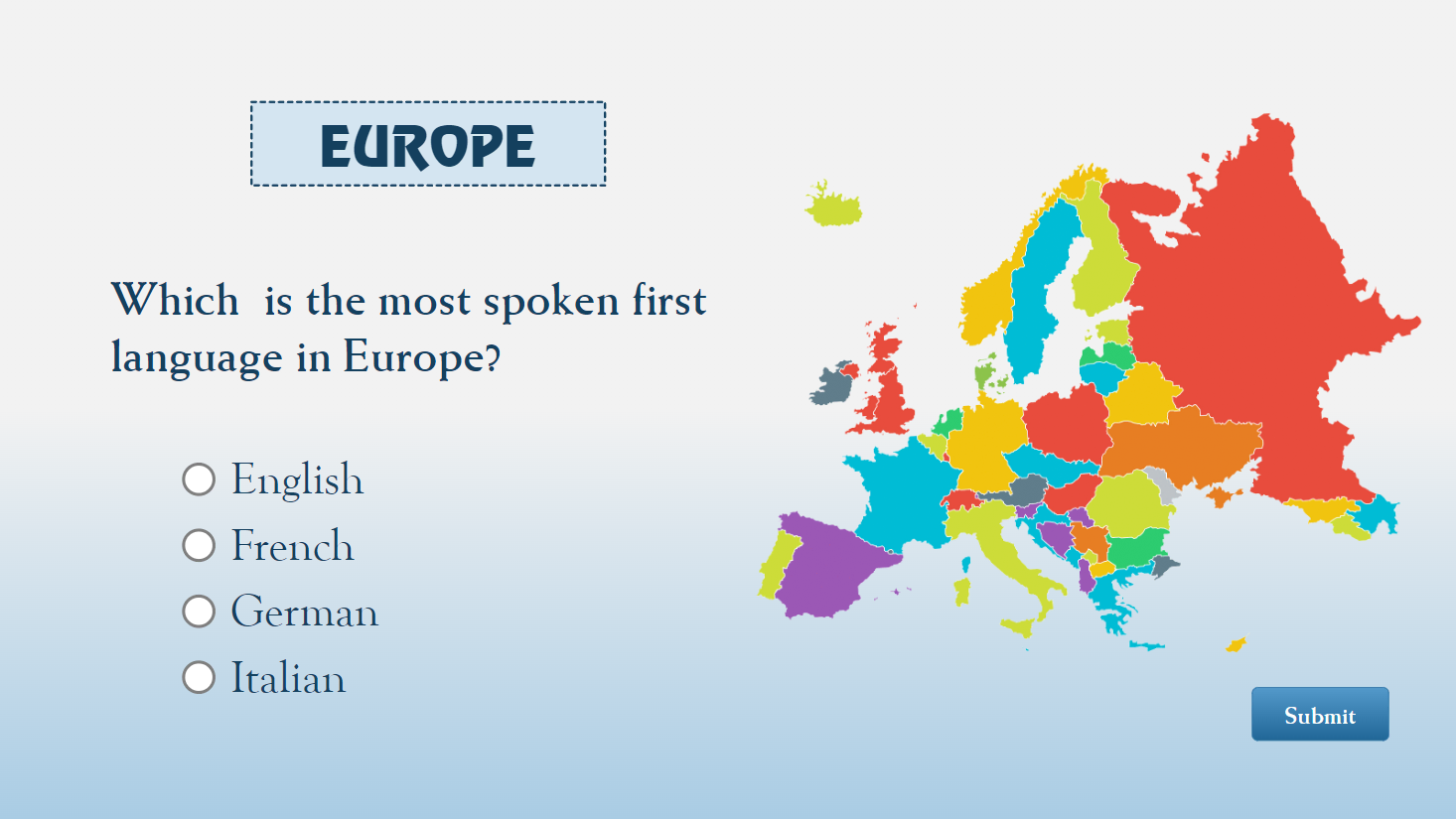
Although they are the most common type of question, they have their advantages and disadvantages.
Pros
- They can cover a broad range of content. Since students do not spend time writing. If a test is the same length, multiple choice questions will outweigh essay questions. Therefore, they allow covering a huge variety of topics and subjects.
- They provide an excellent basis for post-test discussion. After checking the test’s answers, students may wonder about its correctness. Discussing why it is correct and the other wrong helps students recognize mistakes and reinforce their understanding.
- They are easy to score. The tests with multiple choice questions can be scored easily by machine. Even when the teachers directly grade the test, they don’t take time to consider the answer. In addition, students can estimate their scores after the teachers share the answers.
- They can save writing time. Students only need to read and choose the best answers as requested. They can finish the test faster than when writing.
Cons
- They make cheating easier. The questions and answers all have keywords. Students only need to remember the keywords and easily pass the content along.
- They take time to create. Creating good questions is very time-consuming because teachers have to create both alternatives and distractions. Even distractions should always fit the question. Misinformation from incorrect answers can affect how students think about the topic.
2. True/False
The next preferred type of question for exams is True/False. Its form is simpler than the multiple choice question. A question consists of 1 stem and True/False answer options. It’s good for evaluating students’ understanding of either-or misconceptions. For example, when deciding whether a particular solution is right or wrong, use singular or plural structures, and so on. This type of test question is suitable for students to recall or test comprehension.
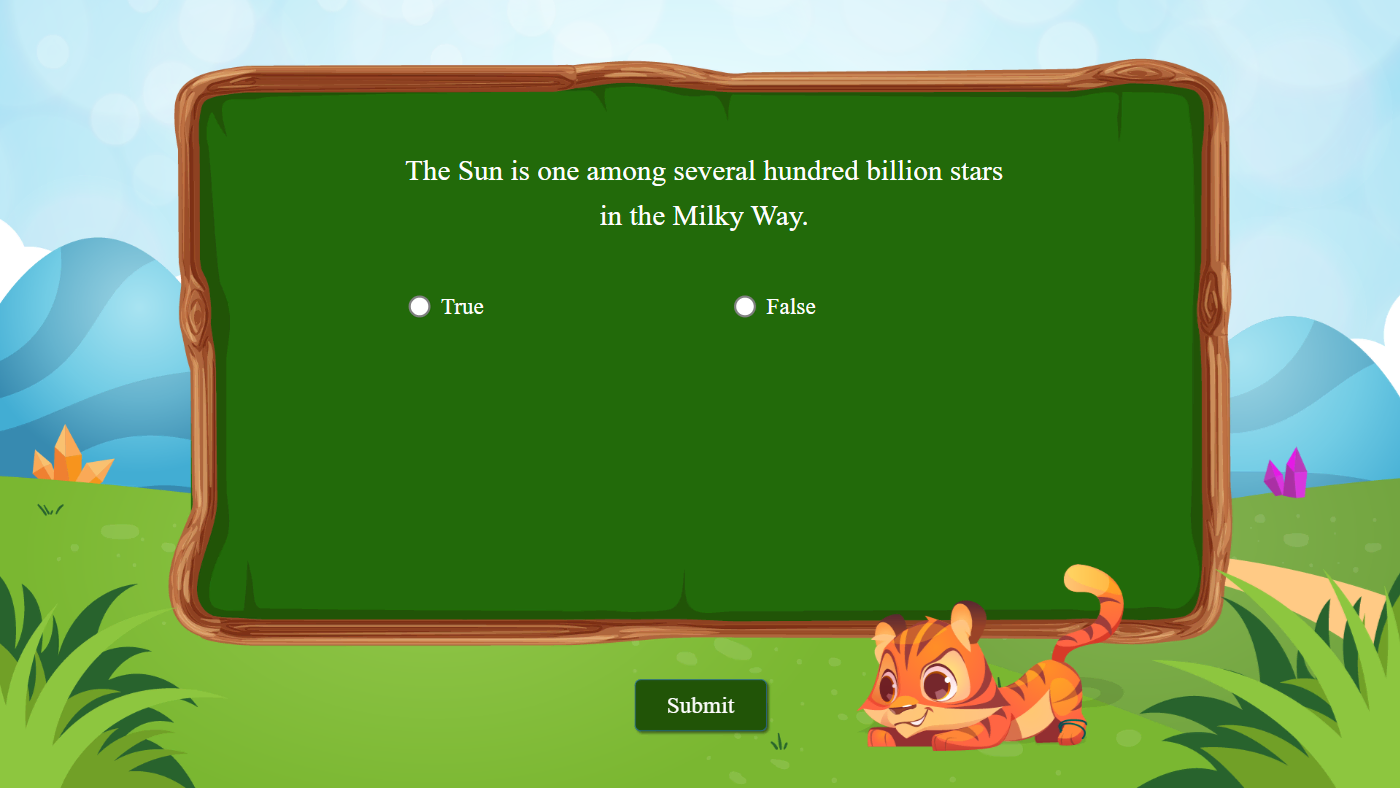
The questions are not as superior as the first but still have many advantages.
Pros
- They can test large amounts of content. That’s true because it’s very short. Students should be able to answer 3-4 of these questions per minute. Since it does not take much time, the number of questions can be increased, covering many issues.
- They are easy to write. Teachers only need to think of any propositions that are true or not. The progress is both simple and time-saving.
- They are also easy to score. Of course. Whether grading electronically or by hand, checking 2 answers is a breeze.
Cons
- They are too easy. Students have a 50% chance of getting the correct answer by guessing. So, teachers may be confused if students really understand or have good luck. This proves it is not suitable to measure higher-level thinking competence for students.
- Teachers need to prepare a large number of items for high reliability. The speed of doing the true/false questions is fast, so a lot of questions are necessary.
3. Completion
Types of exam questions such as Fill in Blank and Fill in Text Entry are known as completion. The first one is found both on paper and online exams, while the latter is more seen on computers. A question is a statement or a paragraph that contains blank(s). Students need to fill in the blank with the correct words or phrases. They have to find the answers, not a simple recognition of the correct one. Therefore, this type of question is suitable for testing the knowledge level of the students.
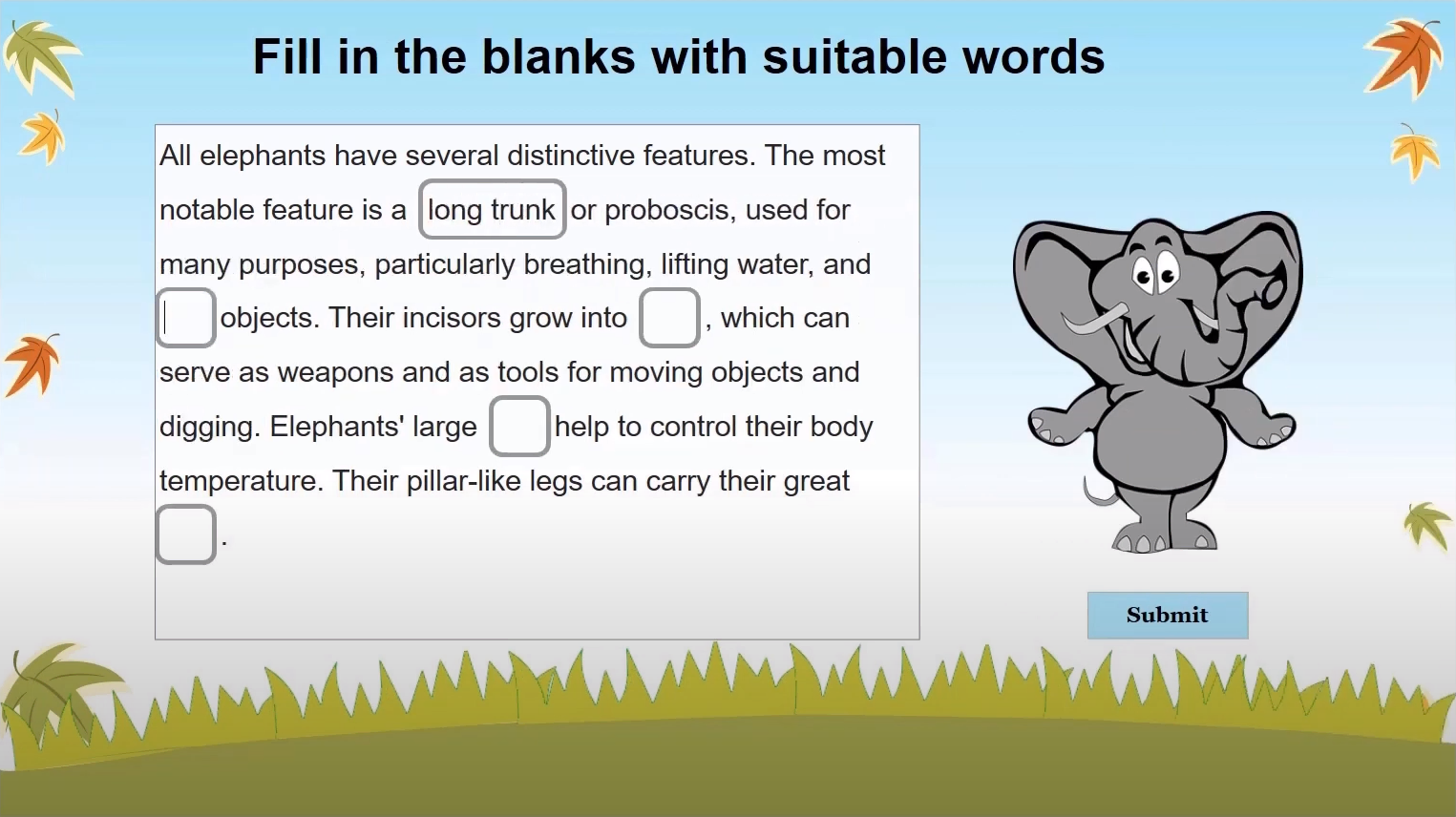
The questions have pros and cons as follows:
Pros
- They minimize guessing. Since there is no hint, students have no choice but to think and find out the correct answer.
- They encourage students to study more attentively. The content of the questions can be related to any part of the study. In addition, without available choices, students are forced to focus on the lessons.
- They allow students to come up with creative answers on their own. Rather than relying on suggestions, students can write answers according to their understanding. It reflects their perception of the problems. Thanks to that, teachers can evaluate them more correctly.
Cons
- They take time to grade. Students can create the answers. However, it’s hard to control synonyms and different word orders. Only the teachers can judge its correctness or incorrectness. That’s why it takes their time.
- They may lead to students learning disjointedly. Memorizing small parts may get a higher score, so students only learn what is noticed.
4. Matching
Matching is also a common type of question. It provides the most effective way to test the relationship between objects. For example, that is the relationship between events, dates, characters, and places. The question is often divided into two sides. On one side are the stem or problems, and on the other side are the corresponding answers. Usually, the question will be placed on the left and the answer on the right. Students’ task is to read items on the left and find the related ones on the right. The questions are also suitable for testing students about the experiments, the experimenters, the results… Matching questions in an online test also have a form of Drag-n-Drop questions.
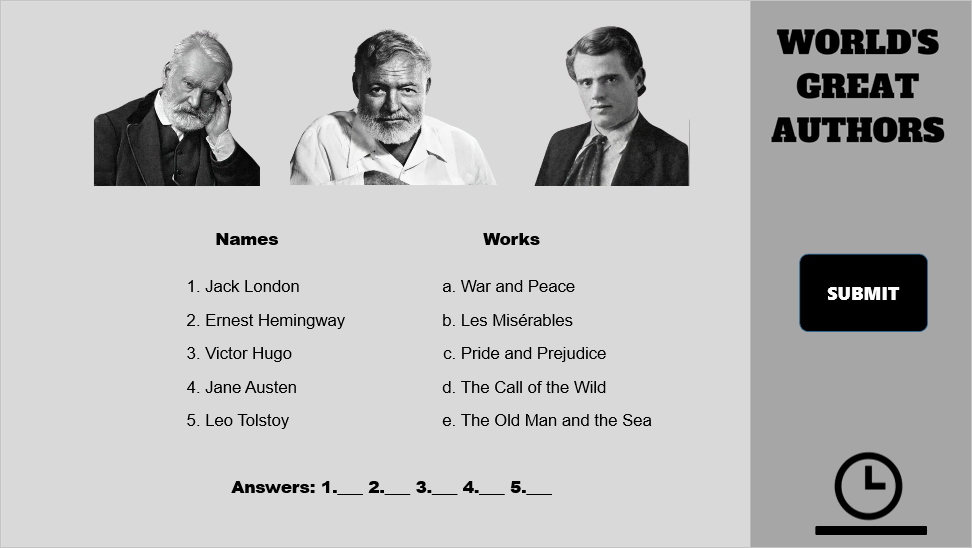
As follows are some pros and cons of the questions:
Pros
- They cover the maximum of knowledge levels in a minimal amount of space. There is no space lost for choices like multiple choice or true-false questions. The number of questions is quite a lot, but it only takes 1-2 lines for students to write the answer.
- They are valuable in data-rich content areas. Take History, for example, the subject in which there are multiple timelines, events, and characters. All are handy to show in the test.
- They reduce guessing. It is more difficult to eliminate answers than that in multiple choice questions.
- They are easy to grade. Again, just follow the answers list, the exams can be marked electronically or by hand.
Cons
- Students take a longer time to do the test: Each side usually has 4-8 items, students need to read both sides and think, so it takes more time.
- They are not very suitable for high-level students. Students only recognize the relationship between the data on both sides. They do not need specialized knowledge to do this type of exercise.
5. Essays
Another important one in the types of exam questions is essays. They have neither choices nor hints. The questions contain one or several sub-questions. They are often shown in two main forms: extended response and restricted response. The first one tests the ability to synthesize and evaluate problems. The answers are freely written based on knowledge and understanding. The second one has certain requirements such as comparison and distinction. The answer usually includes certain parameters. Students’ task is to build on their knowledge and understanding to write down their answers.

Accordingly, these “high-risk, high-reward” questions have the following pros and cons.
Pros
- They allow students to explain their understanding and demonstrate creativity. The same knowledge has been learned, but each student has a different understanding. In that way, they will give different answers. What students write down demonstrates their understanding and creativity.
- They push analyzing and critical thinking. Essay questions are not just about memorizing and writing them down. To answer correctly, students need to analyze the problems and arrange them in a logical sequence. While doing that, they generate questions or have opinions that differ from the facts. Critical thinking is formed from there.
- They encourage studying more efficiently. Instead of selecting answers, students must write their answers carefully. Therefore, they must learn well to be able to understand, analyze and present. That’s how learning becomes more effective.
- They give the instructors an opportunity to comment on students’ progress. Students’ answers indicate the depth of their understanding and the difficulties they may be experiencing. Teachers can know that through their work and make appropriate adjustments.
- They develop other skills. Essays not only test students in their classroom curriculum but also help them build practical skills. That is the practice of writing and persuasion. These skills are valuable in any profession.
Cons
- They can cause subjective assessment. The teacher must be the grader. As there is no exact answer, the grading is based on the teacher’s feelings. It depends on emotions, health status, and many external factors. Therefore, the scores given may be inaccurate. It’s also not nice if teachers bias anyone. And students can write essays in a cliché to make the work sound better.
- They are time-consuming. It takes a lot of thought and planning to write an essay. While some students can understand the lesson, they lack the time to fully write down their thoughts. Besides, teachers take time to read and grade papers.
Summary
So you got to know the characteristics, pros & cons of 5 common types of exam questions. You now can choose the appropriate question types to create a test for your students.
Read more:
Advantages of distance learning
Pros and cons of online learning for teachers and students